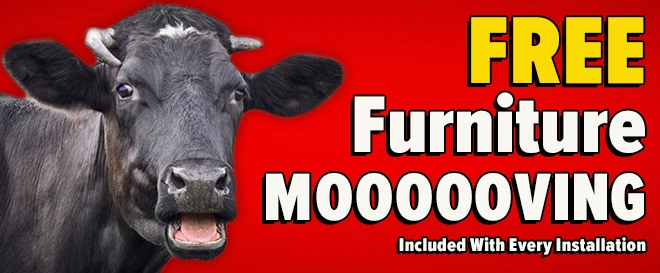Buy carpet flooring from a reputable & local company!
Enter your zip code to see if next day carpet estimates are available in your area.


What are Carpet Pads?
Even though you can't see your carpet padding, it still plays a big role in the life and performance of your carpeting.
Carpet pad, or carpet cushion, serves as a foundation for all types of residential carpet installations. Finding the right carpet padding for your new floor is essential. The carpet and the padding you purchase need to complement each other. A poor choice in pad is guaranteed to lead to future disappointment.
Most people think that carpet padding is used to keep the flooring comfortable. While this is true, there are many more benefits it provides including:
- Noise reduction
- Impact absorption
- Increases carpet life
- Subfloor damage prevention
Without padding, the wooden subfloor underneath would tarnish the backing of the carpet.
Types of Carpet Padding
There are a couple different types of cushion you can find on the market today. This does not mean that every type of carpet pad will work with your specific install. It also does not mean that every installation company has them in stock.
These are the different types of carpet pad you may come across:
- Bonded Urethane - Also known as Re-bond, this is the most popular padding sold on the market today. It is created from the same high-density material used for automobile seats. Bonded urethane performs well and keeps spills from soaking down to the floor.
- Urethane Foam - This carpet cushion can be found in different thicknesses and densities and will perform well when applied correctly.
- Fiber Cushion - Fiber cushion is made from extra scrap fiber. It promotes environmental friendly strides but remains an unpopular choice due to poor performance over time.
- Waffle Rubber - Staying true to the name, this cushion comes in a waffle like texture. It is a good short term cushion, but it is known to deteriorate quicker than most.
If you want to choose the padding on your own, be careful. Sometimes people choose based on the price of carpet padding as well as making a few common mistakes.
- Choosing too soft.
- If the cushion is too soft, it tends to bottom out when exposed to heavy foot traffic.
- Carpeting will then assume the rest of any abuse and lose performance and lifespan.
- Choosing too thick.
- Padding may not latch to the tack strips.
- Lifting the carpet higher off the floor.
At the end of the day, it is best to use a padding your local carpet dealer or carpet manufacturer recommends. Industry consensus is a carpet padding thickness of 7/16 inch.






